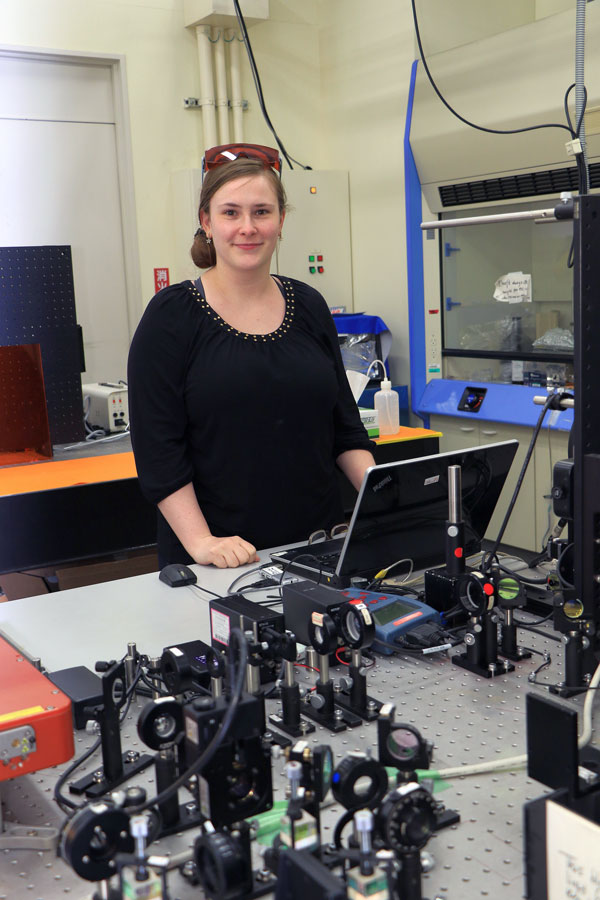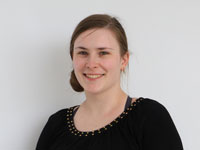Oct. 5, 2018
Laser links
Daniela Serien, Special Postdoctoral Researcher
Please briefly describe your current research.
As part of my research I use focused laser light to cross-link proteins. Specifically, I use computers to control the path of focused laser beams as they move through protein solutions. The lasers allow me to cross-link proteins along their path, fabricating proteinaceous microstructures using components that are smaller than a micrometer in thickness. Proteins are widely reported to retain their function after such fabrication, but in order to harness these creations we want to thoroughly understand why, as well as know how to make their function retention reliable even if they are very complex.
Why is this important?
If we understand how to cross-link naturally occurring and synthetic proteins by design, we may one day be able to use them to create biomimicking microenvironments that support organ-on-a-chip cell cultures, biochips, and drug-screening microfluidics. Proteins are also useful as environmentally friendly and biocompatible materials, as well as for pH-tunable optics, flexible optics and soft-matter actuators.
How did you become interested in your current field?
As a biophysics student, I was fascinated by the many amazing proteins we studied. Channelrhodopsins, for example, are light-gated ion channels that allow organisms such as single-cell algae to sense light. I also learned about tuning and engineering the tertiary structure of proteins and how the interplay of structure and function can have useful medical applications in areas such as optogenetics (in this field researchers use modified versions of channelrhodopsins and study neural and behavioral responses when they are stimulated with light). I then started to play with the idea of building devices from proteins. A couple of years later I had the chance to use a laser system in a laboratory developing microelectromechanical systems for biomedical applications. There, I created my first structures.
What has been the most interesting discovery in your field in the last few years?
The most interesting recent discoveries in my field have been regarding lasers and advances in the concepts around multiphoton fabrication, in which the fabrication process is confined to tiny volumes due to multiphoton processes and threshold conditions.

When did you join RIKEN?
In 2016, I joined RIKEN as a young postdoctoral researcher wanting to deepen my understanding of my research field, but also wanting to learn as much as I could about team management, fund management and research strategies.
How has being at RIKEN helped your research?
RIKEN has an amazing cooperative network of centers and teams and this encourages interdisciplinary work, which helps me better understand the wider questions around my own research. I also regularly use the fluorescence microscopy and electron scanning microscopy at RIKEN to study my microstructures and use Raman or Fourier-transform infrared spectroscopy to learn more about the nature of the cross-linking within the proteinaceous microstructures I have fabricated.
What excites you the most about your current research?
I really enjoy the challenge of creating something new and unknown—as well as the detail of fabrication, imaging interesting structures, and the vast possibilities for the applications of proteins.

